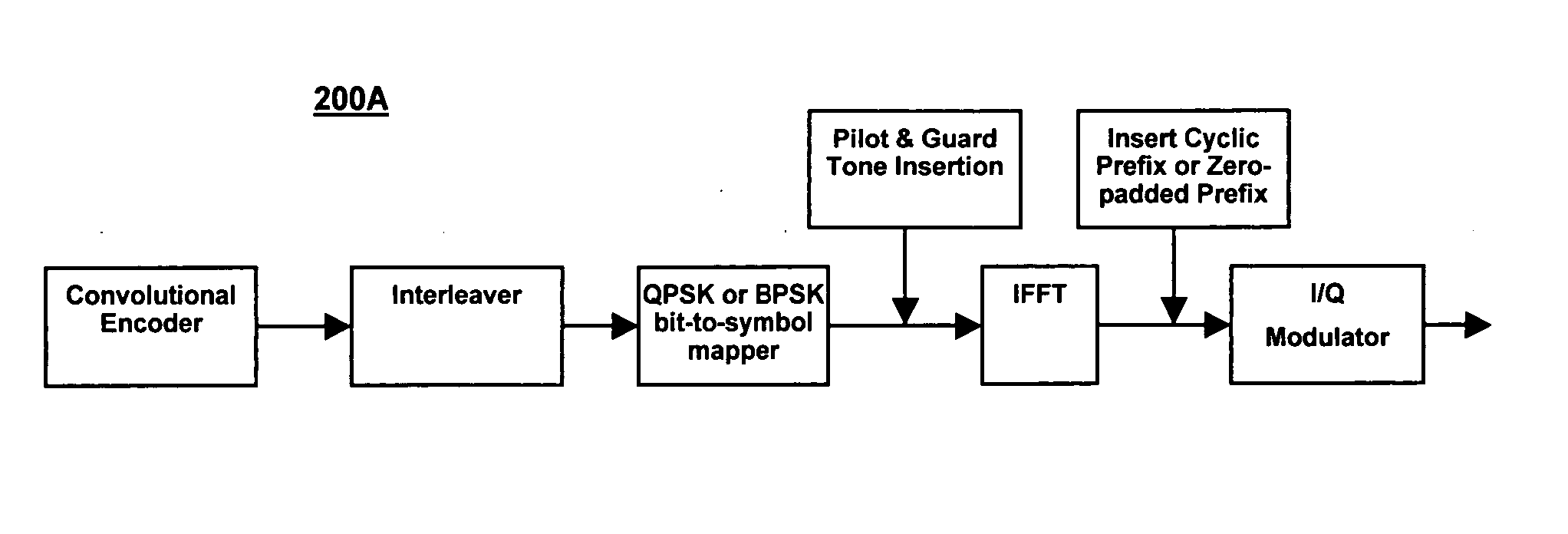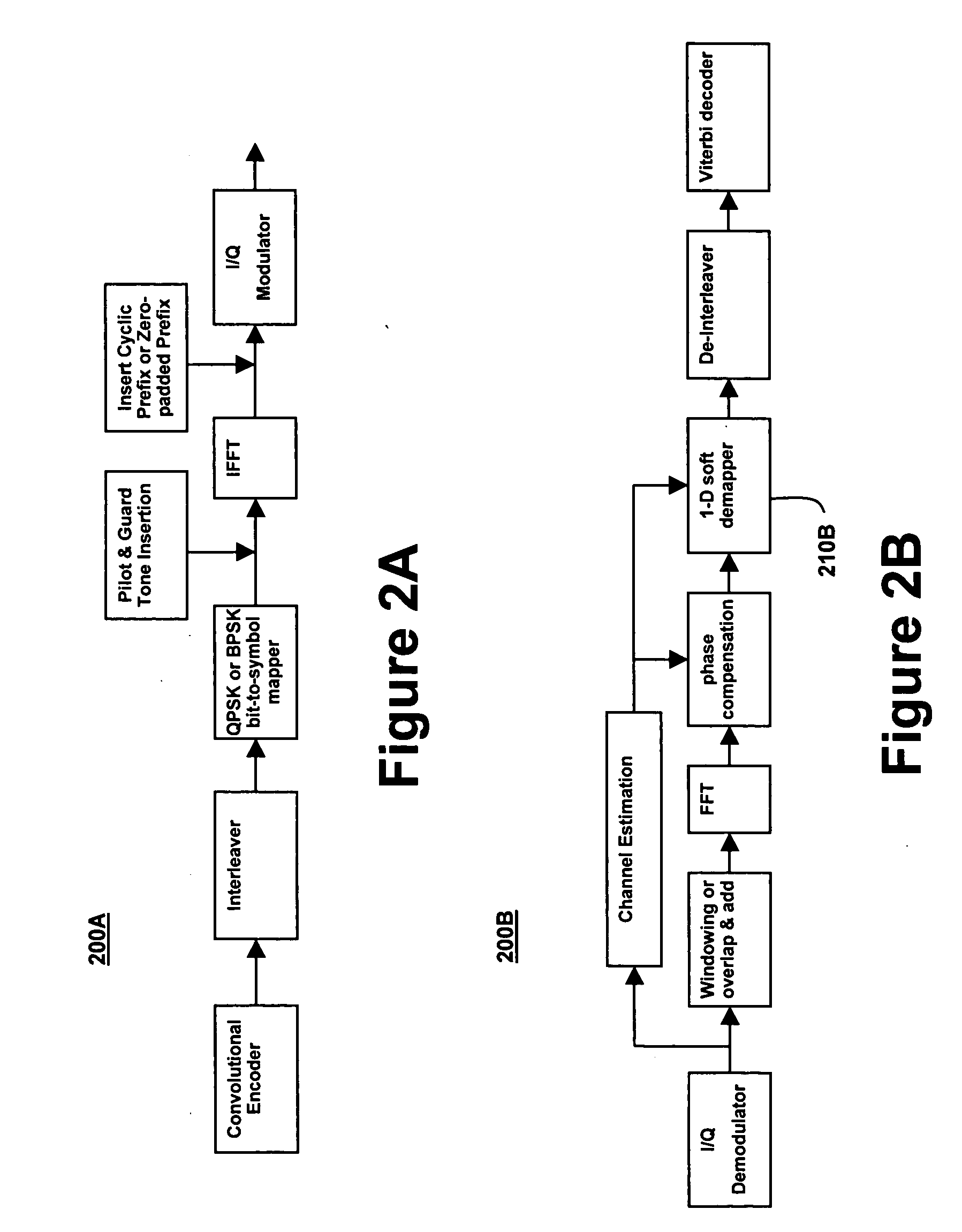System & method for spreading on fading channels
a technology of fading channel and system, applied in the field of system and method for spreading on fading channel, can solve the problems of 480 mbps mode, significant performance penalty, and poor performance of the specification listed abov
- Summary
- Abstract
- Description
- Claims
- Application Information
AI Technical Summary
Benefits of technology
Problems solved by technology
Method used
Image
Examples
Embodiment Construction
[0039] Aspects of the present invention relate in general to the transmission of data using a radio frequency communication system. More specifically, aspects of the present invention comprise a method of mapping data bits to information symbol values prior to transmission, in order to reduce the negative effects of fading upon the recovery of the information symbols at the receiver.
[0040] In a representative embodiment of the present invention, an improved encoding scheme may comprise combining two symbols, x1 and x2, that experience different amounts of fading, by multiplying them by a 2×2 matrix, as follows: [y1y2]=[211-2][x1x2].
[0041] The above equation may also include a scaling factor in order to maintain the same transmitted power. In this case, this matrix multiplication results in a simple rotation of the point (x1, x2) and does not change the distance properties of the code. If, for example, the two symbols, x1 and x2, take on values from the set [−1, +1] mapped from th...
PUM
 Login to View More
Login to View More Abstract
Description
Claims
Application Information
 Login to View More
Login to View More - R&D
- Intellectual Property
- Life Sciences
- Materials
- Tech Scout
- Unparalleled Data Quality
- Higher Quality Content
- 60% Fewer Hallucinations
Browse by: Latest US Patents, China's latest patents, Technical Efficacy Thesaurus, Application Domain, Technology Topic, Popular Technical Reports.
© 2025 PatSnap. All rights reserved.Legal|Privacy policy|Modern Slavery Act Transparency Statement|Sitemap|About US| Contact US: help@patsnap.com



